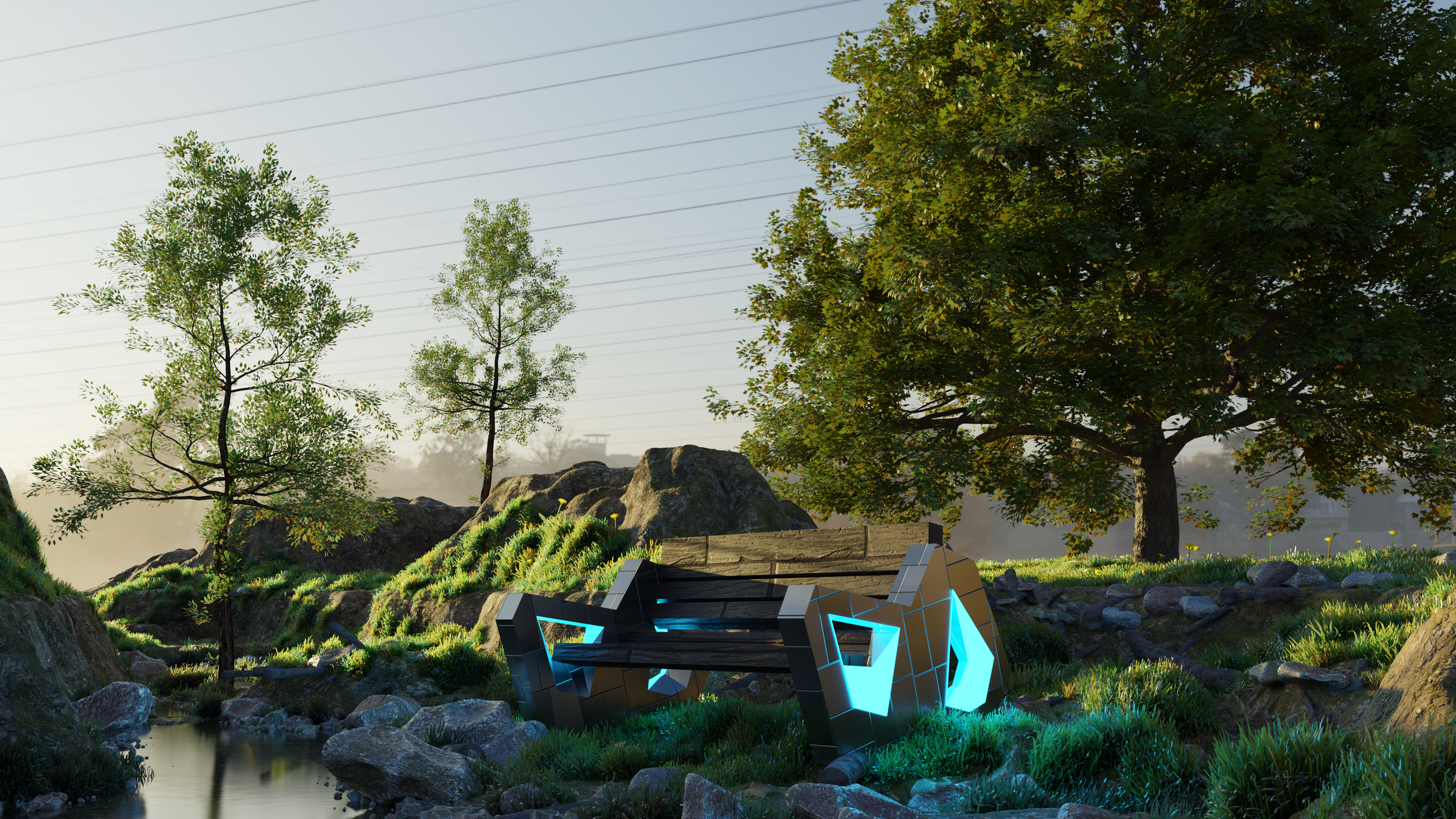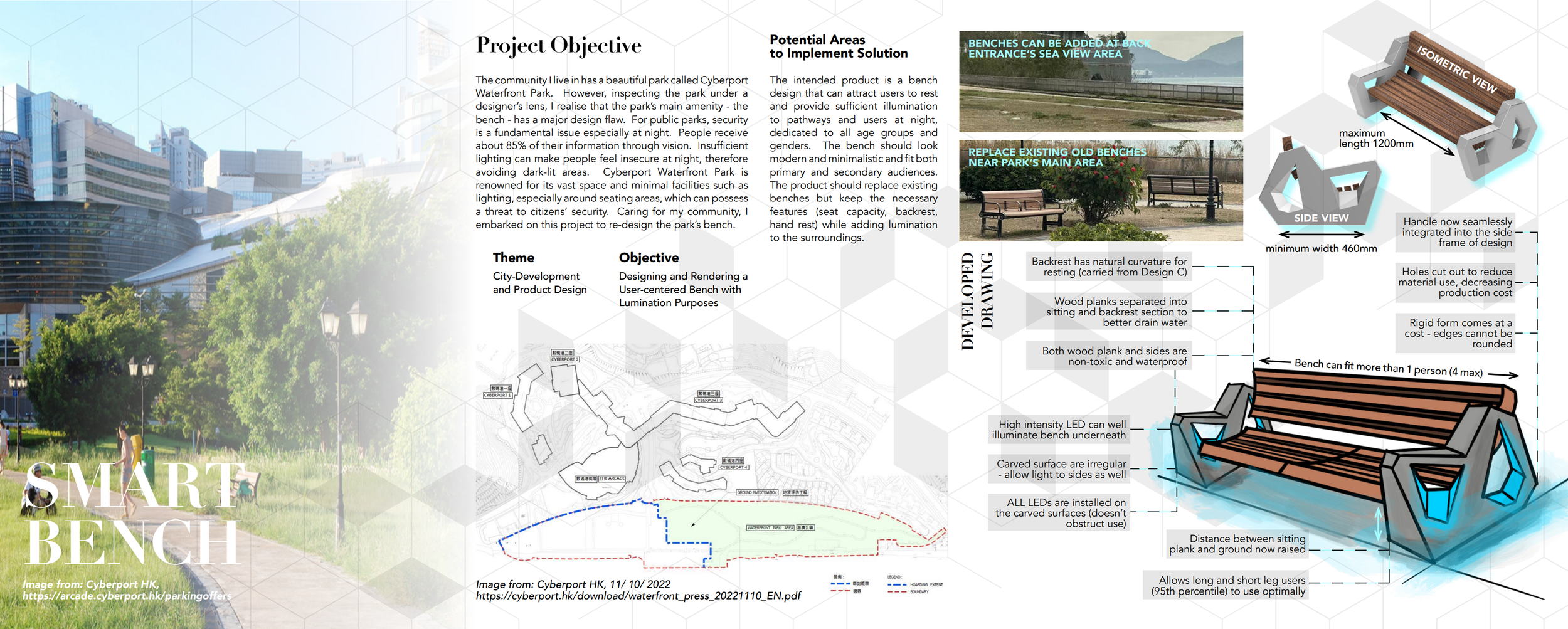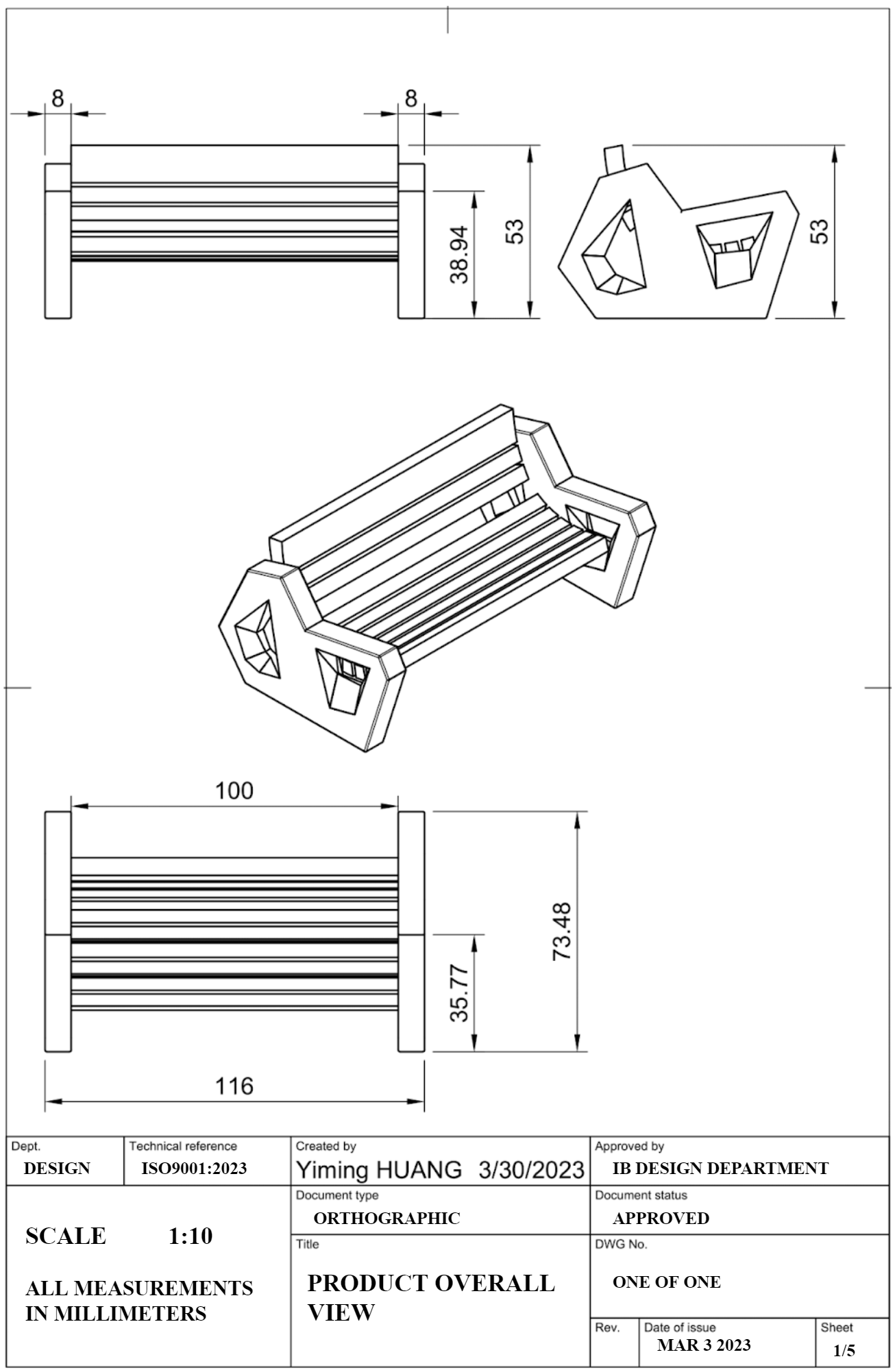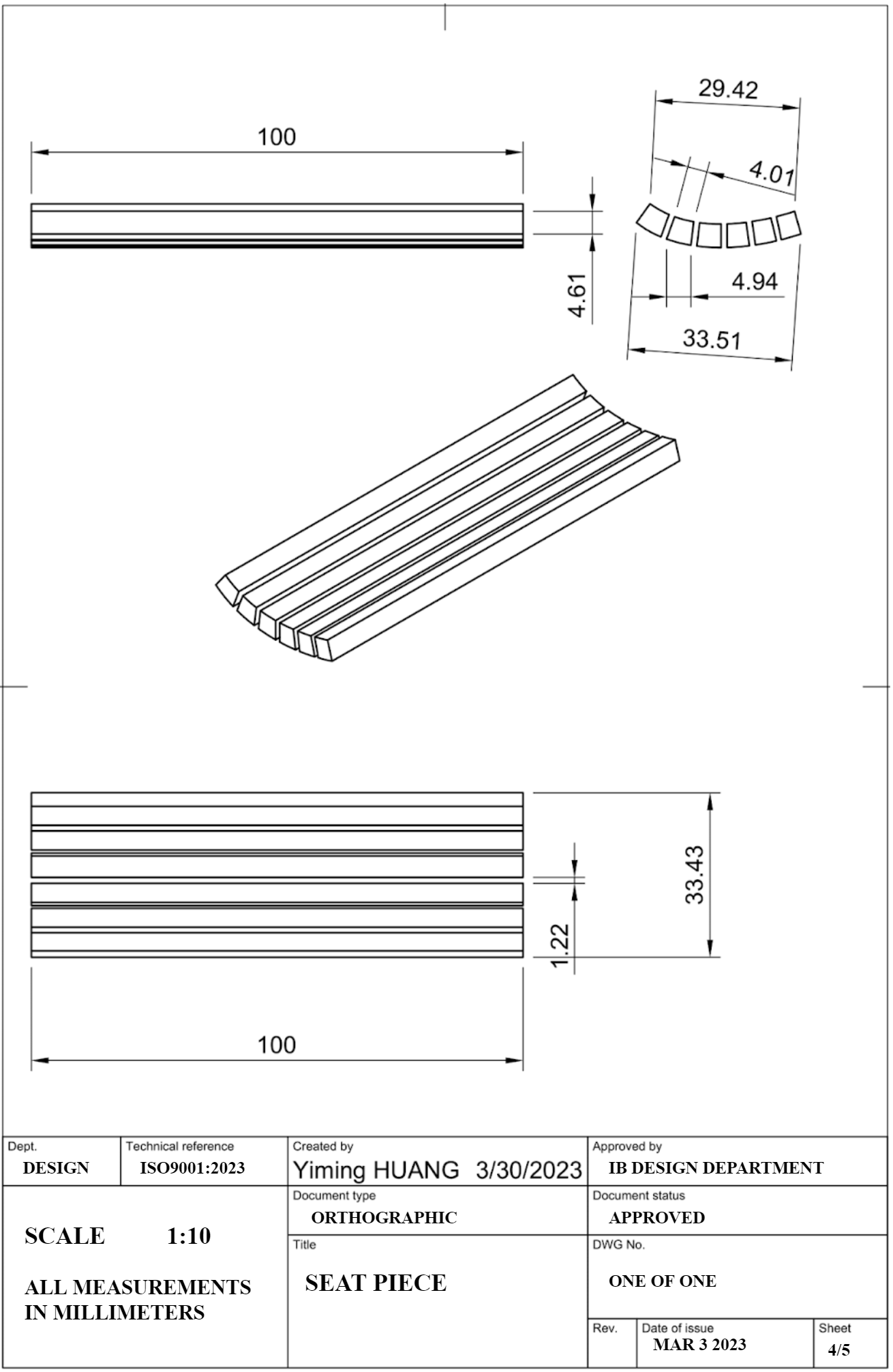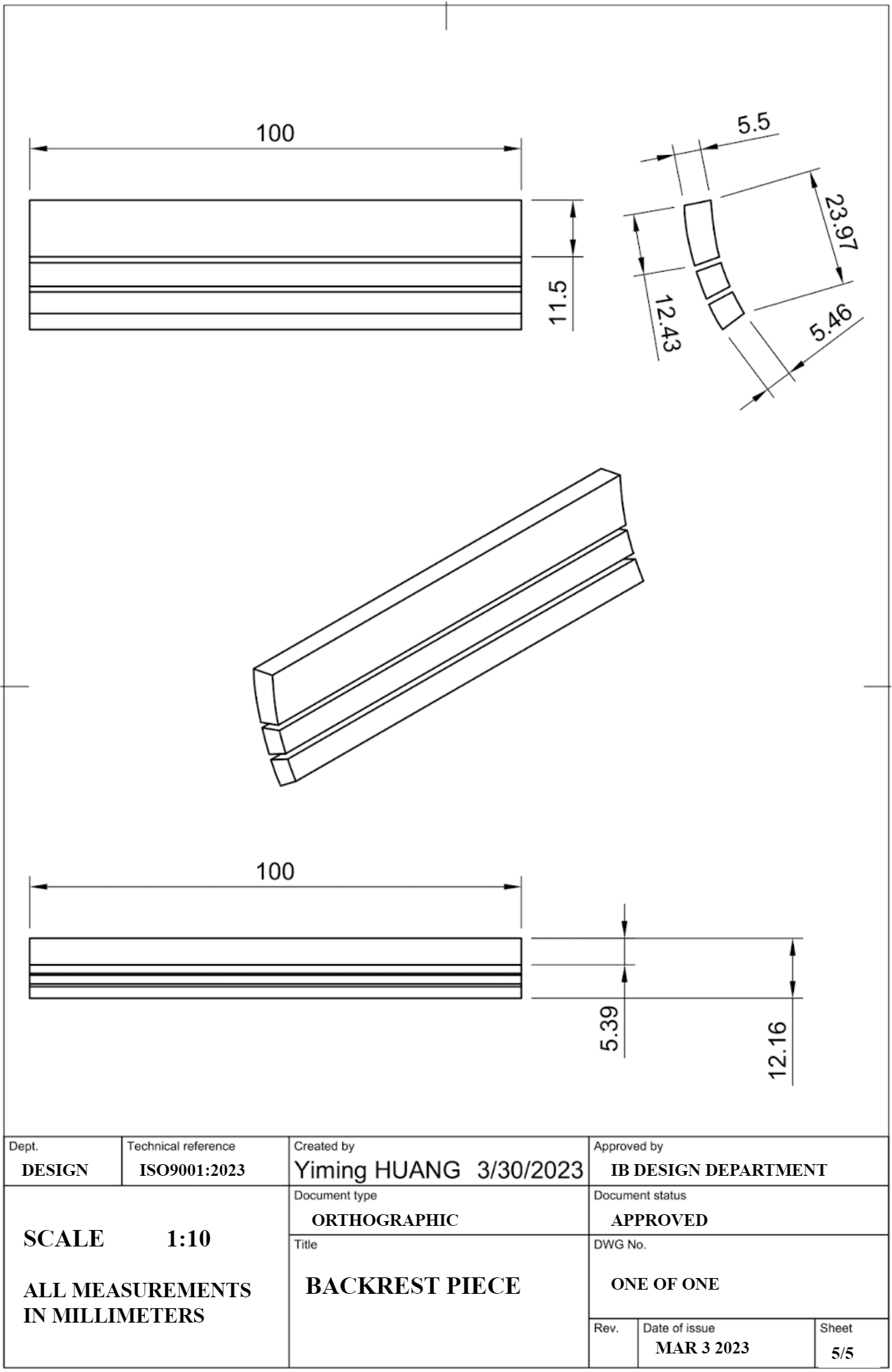In my neighborhood, we have a splendid park named Cyberport Waterfront Park. It was my regular haunt, playing fetch with my dog and unwinding on the bench till late at night. However, looking at the park through a designer’s lens, it struck me that this feature - the bench - had a significant design flaw: there was hardly any lighting around it for users to see clearly at night. For public parks, security is a critical issue, particularly after dark. Around 85% of the information people receive is through vision. Inadequate lighting can make people feel insecure at night, causing them to avoid poorly lit areas. Cyberport Waterfront Park, despite its vast space, is known for its minimal lighting, particularly around seating areas, which can pose a threat to citizens’ security. Out of concern for my community, I embarked on this project to redesign the park’s benches.
The ideal bench should achieve the following goals: attract users to rest and provide ample illumination along pathways to guide users at night. With a clear goal in mind, I began the bench design process by sketching out seven initial designs, scrutinising and endorsing some based on my design specifications. Then, having chosen three refined designs, I conducted foam modelling using a mannequin to assess the visual form (shape, line, proportion) and the practical function (curvature, stability, space). Pushing ahead with the chosen designs, I created CAD models using Fusion 360 to conduct FEA analyses based on compression forces.
After rigorous testing and evaluation, the final bench was selected - a modern and minimalist form with wooden slabs arranged to fit our body’s natural resting curvature, complemented by vivid blue LED lighting on the sides to illuminate the surroundings. The final design was further rendered in Blender and gained approval from Cyberport Committees.
